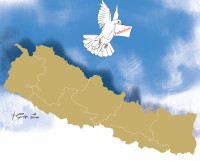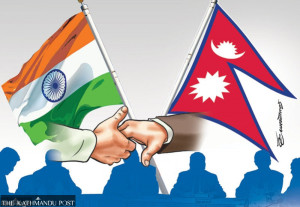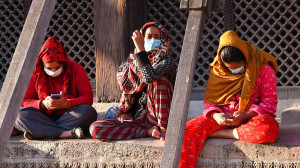Columns
Solar thermal in energy transition
Nepal’s heat demand is still overwhelmingly met by traditional biomass and fossil fuels.
Laxman Prasad Ghimire
As Nepal accelerates its transition towards a sustainable and resilient energy future, public debate continues to centre on electricity generation and distribution. The narrative is natural: Nepal has made remarkable progress in hydropower development, cross-border electricity trade is expanding, and solar photovoltaics are emerging as a complementary clean power source. Yet, a critical element of our energy picture that remains overlooked is solar thermal energy, mainly for heating and cooling.
Heating and cooling account for nearly half of global final energy consumption, and Nepal’s energy profile also reflects the same trend. Whether heating water in homes, supporting tourism infrastructure in mountain regions, disinfecting hospital facilities, cooking in institutional kitchens, drying agricultural products, or powering an industrial ecosystem, thermal energy is everywhere in our daily lives. But unlike electricity, which now reaches close to 98 percent of households, Nepal’s heat demand is still overwhelmingly met by traditional biomass and fossil fuels.
Firewood alone contributes more than 60 percent of Nepal’s total energy use, followed by imported fossil fuels such as LPG, diesel and coal. Electricity accounts for only about 7 percent of the country’s total energy mix. This heavy reliance on firewood has environmental consequences: deforestation, indoor air pollution and health impacts. Meanwhile, dependence on imported fuels exposes the economy to international price shocks and drains foreign currency reserves. Achieving Nepal’s ambition of net-zero emissions by 2045 requires us to rethink energy beyond electricity alone. We must bring heat into the centre of the policy conversation.
Solar thermal technology provides a promising pathway. Unlike solar photovoltaic systems that generate electricity, solar thermal systems convert sunlight into heat. These systems can be used for domestic hot water, space heating in cold regions, industrial process heat, agricultural products drying and institutional cooking. Fortunately, somehow Nepal has gained some experience. Thousands of households, hotels and lodges use solar water heaters, particularly in urban areas and mountain tourism hubs. Either importing from neighbouring countries or local production from domestic companies, installer companies installed significant numbers of solar thermal applications.
Yet the scale of adoption remains modest. Nepal currently has more than 300,000 square metres of installed solar thermal collector area—equivalent to roughly 0.01 square metres per person. By comparison, leading countries such as Cyprus and Barbados have between 0.5 and 0.9 square metres per person. A new Solar Thermal Roadmap prepared by the Alternative Energy Promotion Centre (AEPC) with the support of ICIMOD sets a clear and ambitious target: Reaching 0.3 square meters per capita by 2045. Achieving this vision means installing around 11 million square metres of solar collectors nationwide over the next two decades.
If implemented, solar thermal systems could generate around 7,300 gigawatt-hours of heat annually, which is equivalent to nearly 2000 MW of hydropower. Importantly, this heat would be produced right where it is needed, eliminating transmission losses and easing pressure on the electricity grid. As Nepal moves towards electrified mobility, e-cooking and industrial electrification, avoiding unnecessary strain on the electricity supply will be vital.
The sectoral potential is immense. Solar thermal can significantly scale across residential buildings, hotels, hospitals, boarding schools, monasteries and government institutions. In tourism centres such as Pokhara, Lukla, Namche, Jomsom and Nagarkot, solar heating could sharply reduce dependence on LPG and diesel for hot water. Hospitals and health centres require reliable hot water for sanitation, laundry and sterilisation services. Industrial sectors such as dairy, beverage, noodles, textiles, tea processing, herbs drying and soap manufacturing need process heat—often in the 60–250 degrees Celsius range that solar thermal can efficiently supply. Agricultural value chains can use solar energy for crop drying, milk chilling, greenhouse heating and food preservation. Institutional kitchens such as including schools, monasteries and army barracks can adopt solar steam systems for large-scale cooking.
Investing in solar heat is economically sound. The roadmap estimates that achieving the 2045 target will require approximately Rs23 billion per year—equivalent to roughly Rs631 per person annually. This is a modest investment considering the national benefits: reduced reliance on imported fuels, improved air quality, increased energy security, preservation of forests and enhanced industrial competitiveness. The sector could create more than 13,000 full-time green jobs by 2045 in manufacturing, installation, maintenance, research and training. Domestic manufacturing capacity could also expand as demand grows, supporting innovation and enterprise development.
However, progress will not be automatic. Several actions are needed to scale solar thermal deployment. Financial incentives such as capital subsidies, concessional loans and VAT/Tax/Custom duty exemptions can encourage adoption. Integrating solar thermal systems into building codes and hotel standards would accelerate uptake in priority sectors. Quality standards, installation certification and performance monitoring mechanisms are essential to ensure reliability and consumer confidence. Vocational training programmes must prepare technicians, including women and youth, for employment in this growing field. Public awareness campaigns will help households and businesses understand the economic and environmental benefits of solar heating. Research and demonstration projects—including solar district heating, solar cooling and hybrid systems combining heat pumps and biomass—will prepare Nepal for future technological needs.
Nepal has successfully pioneered community electrification, clean cooking campaigns and rural energy programmes in the past. The country receives abundant sunlight throughout the year—between 1,600 to 2,000 kWh per square metre annually—making solar thermal economically and technically viable across diverse geographies.
Nepal’s clean energy future will not be shaped by electricity alone. To meet our climate goals, strengthen energy security, promote industrial growth and protect our forests, we must embrace heat as a central pillar of energy planning. Solar thermal technology offers a ready, scalable and affordable solution. As we plan our future energy system, the sun’s warmth must be seen not only as natural light, but as a strategic national asset capable of powering homes, industries, farms and institutions.
As we move towards a greener tomorrow, embracing solar thermal is not optional—it is essential. Nepal’s energy transition will be strongest not when it shines only through turbines and power lines, but when it also warms households, industries and communities directly from the sun.




 8.12°C Kathmandu
8.12°C Kathmandu
.jpg&w=200&height=120)












%20(1).jpg&w=300&height=200)

